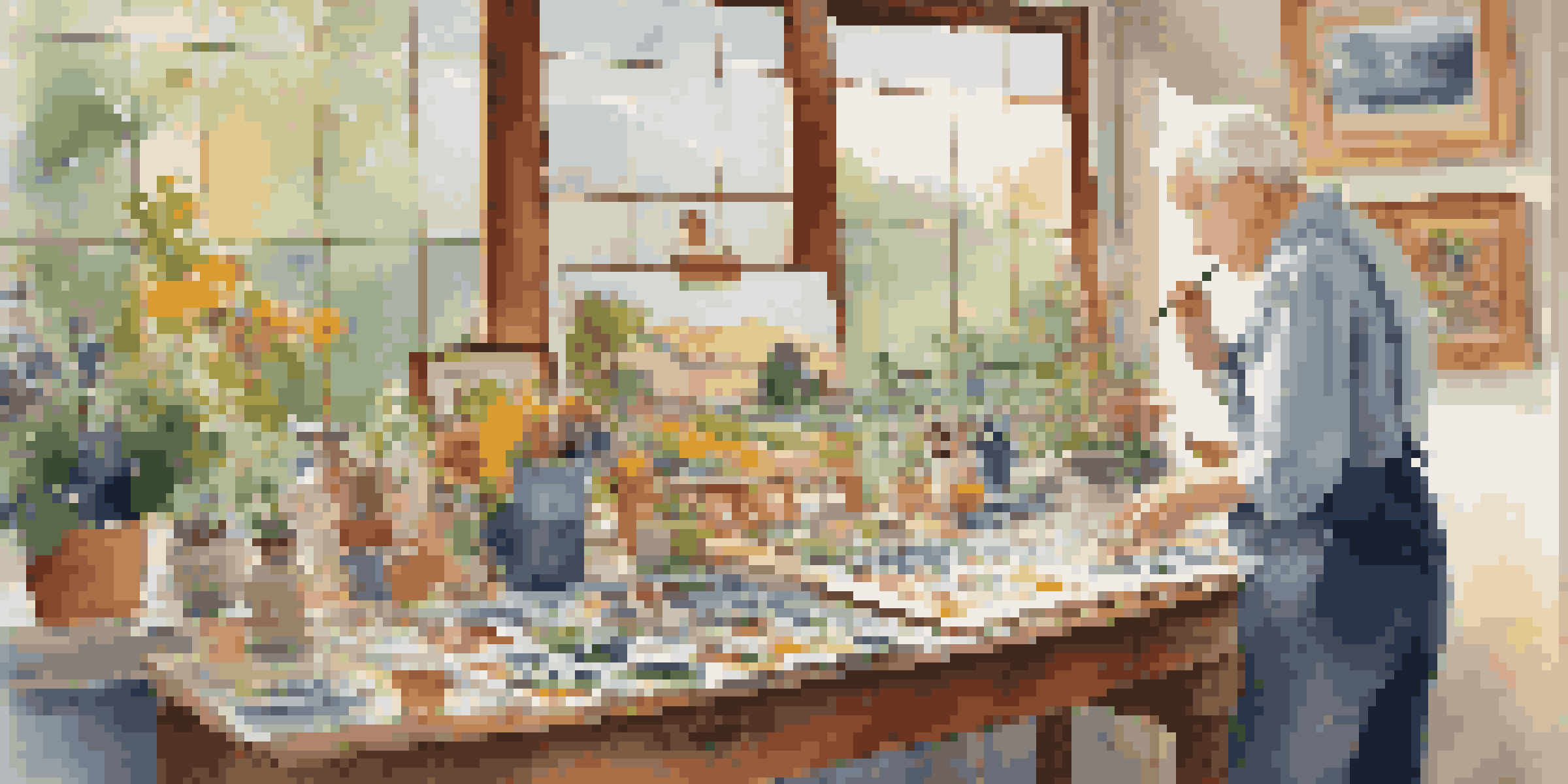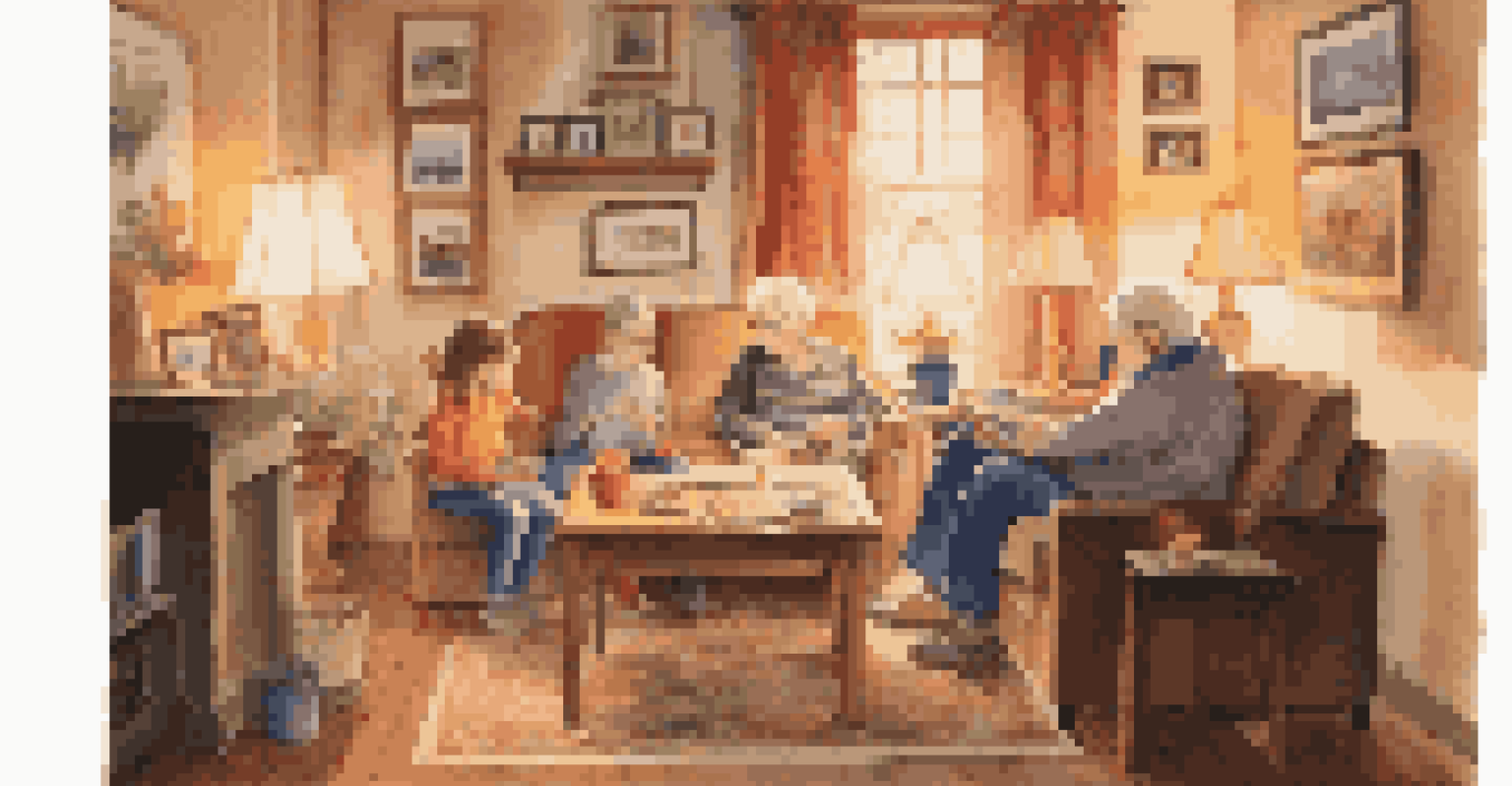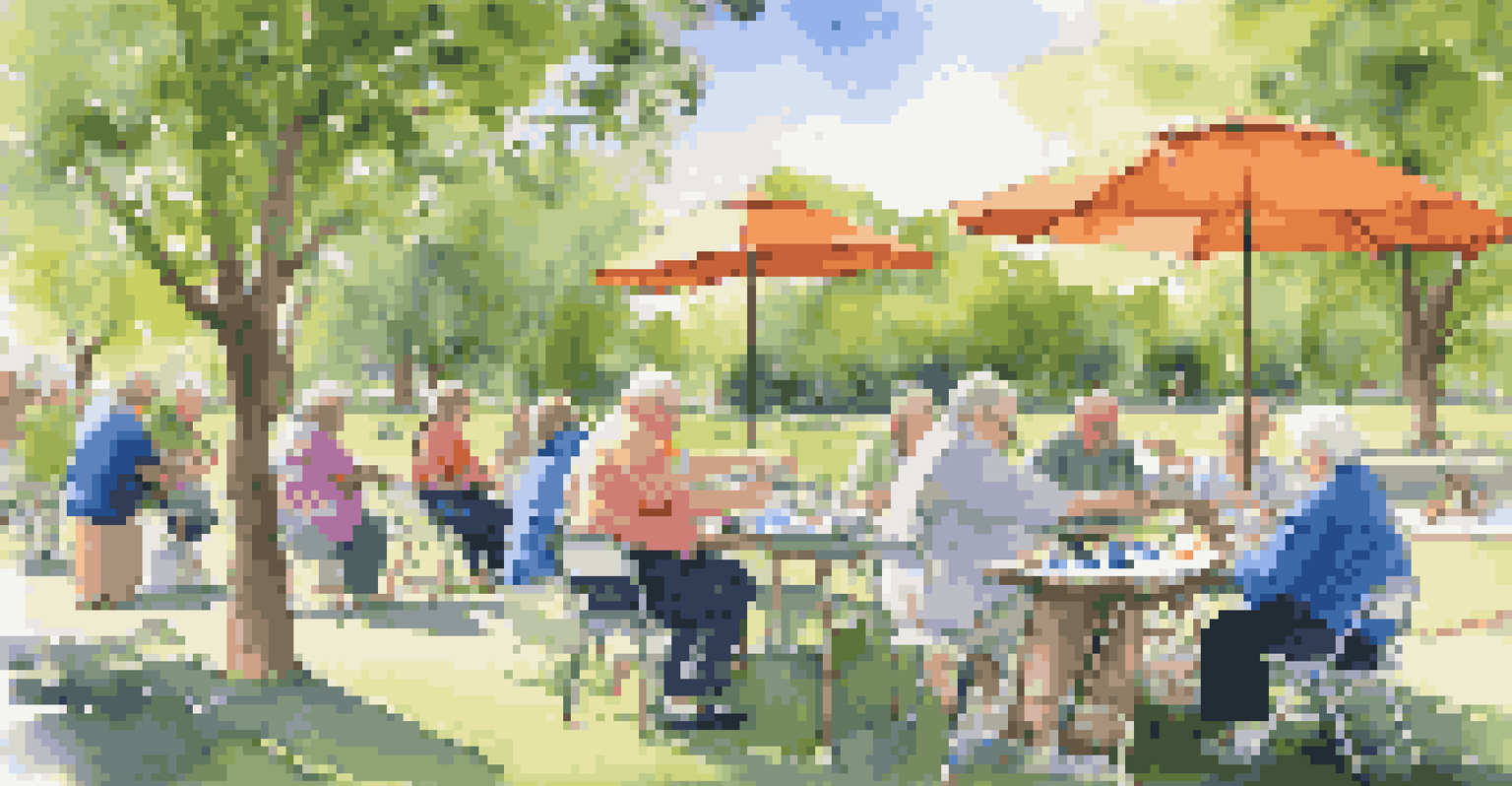Art and Aging: The Journey from Creation to Appreciation

The Healing Power of Art in Aging
Art has a unique ability to heal and uplift the spirit, particularly as we age. Engaging in creative activities allows older adults to express emotions that might be difficult to verbalize. This expression can lead to improved mental well-being, reducing feelings of isolation and depression. Just like a warm cup of tea can comfort on a cold day, art can serve as a balm for the soul.
Art is the most beautiful of all lies.
For many, art becomes a form of therapy that not only fosters creativity but also strengthens cognitive functions. Activities such as painting, sculpting, or even coloring can stimulate the brain, keeping it agile and engaged. Imagine the joy of creating something beautiful and then sharing that creation with others—it’s a wonderful way to connect and communicate.
Furthermore, the act of making art can serve as a reminder of one’s identity and past experiences. Whether it’s through reminiscing while painting or reflecting on memories while crafting, art provides a canvas for personal stories to unfold. This journey through memories can be both therapeutic and empowering for older adults.
The Intersection of Art and Memory
As we age, our memories can begin to fade, but art has a remarkable way of rekindling them. Creating art often evokes memories of past experiences, from childhood to significant life events. It's like flipping through a photo album, where each brushstroke or sculpture piece serves as a reminder of who we are and where we come from.

Art making can also help in recalling specific moments and emotions associated with those memories. For instance, painting a landscape might bring back summer vacations spent at the beach, filling the heart with warmth and nostalgia. This connection between art and memory is not just enriching; it also encourages storytelling, allowing older adults to share their lives with others.
Art Enhances Mental Well-Being
Engaging in creative activities helps older adults express emotions, reducing feelings of isolation and depression.
Moreover, art can serve as a tool for maintaining cognitive health, as it challenges the brain to recall and express memories creatively. Engaging with art not only keeps the mind active but also helps reinforce those precious memories, transforming them into tangible expressions. This blend of creativity and recollection can be incredibly fulfilling.
Art as a Means of Social Connection
Art has the power to bring people together, creating bonds that transcend age. For older adults, participating in art classes or community projects offers opportunities to meet new friends and engage socially. Just as a shared meal can foster connection, so can a shared canvas or a collaborative mural.
Every artist was first an amateur.
Participating in group art activities can combat loneliness, providing a sense of belonging that is vital as we age. The conversations that spark while creating together can lead to deep friendships and shared experiences. Imagine laughing over a paint spill or exchanging tips on technique—these moments create lasting memories.
Additionally, showcasing art in community exhibitions or local galleries can further enhance social engagement. It encourages older adults to share their work, receive feedback, and connect with a wider audience. This visibility not only affirms their creative journey but also fosters a sense of pride and accomplishment.
The Role of Technology in Artistic Expression
In today’s digital age, technology plays a significant role in how art is created and appreciated. Older adults can explore various digital tools and platforms, opening up new avenues for self-expression. Whether it's through digital painting apps or online art classes, technology makes art accessible and engaging.
Moreover, social media provides a platform for older artists to share their work with a global audience. This exposure can lead to validation and encouragement, motivating them to continue their artistic pursuits. Think of it as an online gallery where creativity knows no bounds and age is just a number.
Art Fosters Social Connections
Participating in group art activities allows older adults to form friendships and combat loneliness.
Additionally, virtual art communities foster connections with like-minded individuals, allowing older adults to exchange ideas and techniques from the comfort of their homes. This blend of technology and creativity not only enhances artistic skills but also enriches the overall experience of art appreciation.
Finding Joy in the Process of Creation
For many, the joy of art lies not just in the final product but in the process of creation itself. Engaging in art allows older adults to immerse themselves in the present moment, fostering mindfulness and relaxation. It’s similar to the feeling of being lost in a good book, where time seems to stand still.
The act of creating can also be a form of self-care, providing an escape from daily stresses and a chance to unwind. Whether it’s molding clay, painting on canvas, or even doodling in a sketchbook, the focus shifts to the joy of creation. This simple act can be incredibly rewarding and rejuvenating.
Furthermore, embracing imperfections in their art can encourage a positive mindset. It teaches that the journey of creation is just as valuable as the outcome, fostering resilience and adaptability. In this way, art becomes a metaphor for life itself, where the process is often more relevant than the end result.
Art as a Legacy for Future Generations
As older adults create art, they also have the opportunity to leave a legacy for future generations. Each piece they create tells a story, preserving their experiences, values, and culture for those who come after them. It’s akin to passing down family recipes; each artwork becomes a cherished heirloom that can be appreciated for years to come.
Sharing art with family members can spark conversations about heritage and history, creating a bridge between generations. Imagine a grandparent teaching a grandchild to paint—this interaction not only fosters creativity but also deepens familial bonds. These moments become priceless memories that highlight the importance of storytelling through art.
Art Leaves a Lasting Legacy
Creating art enables older adults to preserve their stories and values, passing them down to future generations.
Moreover, encouraging younger generations to appreciate and create art can instill a sense of creativity and expression in them. This can lead to a cycle of artistic engagement that spans generations, ensuring that the passion for art continues to thrive. Art thus becomes a timeless connection, nurturing relationships and shared experiences across ages.
Embracing Change: The Evolution of Artistic Expression
Aging brings change, and with it, the opportunity for artistic evolution. As older adults navigate new life stages, their artistic expressions often shift, reflecting their experiences and perspectives. This evolution can lead to the exploration of different mediums, styles, or themes that resonate more deeply with their current selves.
The beauty of art lies in its ability to adapt and transform, much like the journey of aging itself. Just as a tree sheds its leaves in autumn, only to bloom anew in spring, artists can embrace change and discover fresh ways to express their creativity. This journey of exploration can be both liberating and empowering.

Additionally, evolving artistic practices can encourage older adults to confront their feelings about aging and mortality. Art can serve as a powerful tool for reflection, helping them process these transitions while finding beauty in the inevitable changes. Through this artistic lens, the aging journey becomes a canvas of growth and self-discovery.